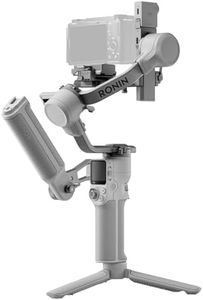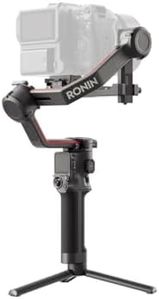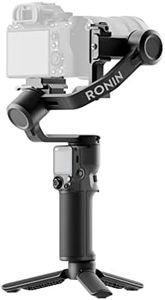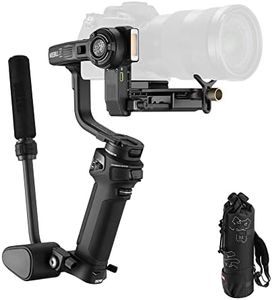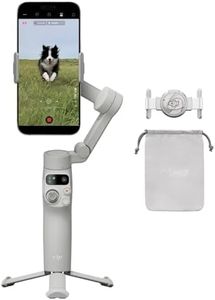We Use CookiesWe use cookies to enhance the security, performance,
functionality and for analytical and promotional activities. By continuing to browse this site you
are agreeing to our privacy policy
10 Best Gimbal Stabilizer
From leading brands and best sellers available on the web.By clicking on a link to a third party's website, log data is shared with that third party.
Buying Guide for the Best Gimbal Stabilizer
A gimbal stabilizer is a great tool for anyone wanting to achieve smooth and steady video footage, especially when moving or filming handheld. Whether you’re using it for a smartphone, camera, or action camera, understanding the main features will help you choose the right gimbal for your specific needs. The most important thing is to think about what kind of filming you’ll be doing—like vlogging, travel videos, or professional work—and how much weight and complexity you’re comfortable handling. Assessing your filming devices and style will guide your choice.Payload CapacityPayload capacity is the maximum weight the gimbal can support while still maintaining smooth stabilization. This matters because if you overload the gimbal with a camera or accessories that are too heavy, it won’t work properly and could even be damaged. Light payload capacities (usually up to 1 kg) are best if you’re using a smartphone or a small action camera. Mid-range capacities (1–2 kg) are ideal for mirrorless cameras or slightly larger setups. Professional gimbals can support heavier DSLRs or cinema cameras (2 kg and up). To pick the right one, add up the total weight of your device and any accessories like microphones or lights, and ensure your gimbal’s capacity is higher than that number.
Number of AxesGimbals typically come in two or three-axis versions, referring to the directions they can stabilize. A two-axis gimbal stabilizes tilt and roll, while a three-axis gimbal also adds stabilization for panning (side-to-side). Three-axis gimbals offer the smoothest footage, especially when you’re walking or during dynamic movement. If your videos are mostly static or involve simple movements, two-axis might be enough. Most people find three-axis gimbals best for versatile, cinematic results, especially if you plan on moving around a lot while filming.
Battery LifeBattery life indicates how long you can use the gimbal on a single charge. This is important if you plan to film for extended periods or don’t have easy access to charging. Short battery life (under 6 hours) may work if you only shoot quick clips or can recharge often. Mid-range (6–10 hours) suits regular daily use, while long battery life (10+ hours) is invaluable for travel, events, or professional gigs. Think about your average filming session and pick a gimbal that can last longer than your typical needs.
CompatibilityCompatibility refers to the types and sizes of devices a gimbal can hold—ranging from smartphones to different camera sizes. Some gimbals are designed only for phones, while others fit action cameras, mirrorless, or larger cameras. Check if the gimbal grips, mounting plates, and controls fit your gear and if it allows direct camera control, like zoom or shutter, via the grip. Choose a gimbal specifically designed for your main device to ensure a secure fit and full features.
Portability and WeightPortability and weight determine how easy the gimbal is to carry around. Lightweight and compact gimbals are excellent for travel, vlogging, or shooting on the go, as they’ll fit in a small bag and won’t tire your arms. Heavier gimbals may offer more features or support bigger cameras, but can be tiring to use over long periods. If you need mobility and ease, go for a lighter model, but if you’re doing more controlled, stationary shooting with a big camera, a larger gimbal can be a better choice.
Controls and FeaturesControls and features include everything from on-handle joystick controls, trigger locks, or follow modes, to advanced functions like time-lapse, object tracking, or built-in displays. Simple gimbals might only stabilize, while advanced ones let you control your device remotely or select different stabilization styles. Consider which extra features you’ll actually use—if you want advanced creative shots, look for smarter controls, but for basic stabilization, simpler is often better and easier to learn.

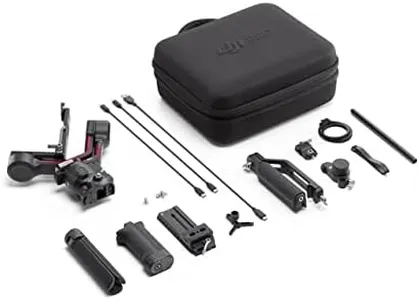
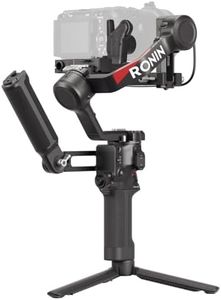

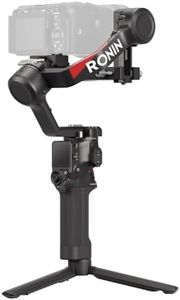
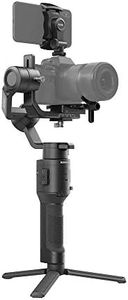
![ZHIYUN Crane M3S Combo [Office], 3-Axis Lightweight Camera Gimbal Stabilizer, Bluetooth Control, Fill Light, Phone Clamp and Backpack, Handheld Gimbal for Mirrorless, Smartphone, Action Camera](https://images-proxy.bestreviews.guide/X6MFWgXQi5uPcxbl6smdYFaOFI8=/0x300/https://m.media-amazon.com/images/I/41b2iQlvE5L._AC_CX679_.jpg)
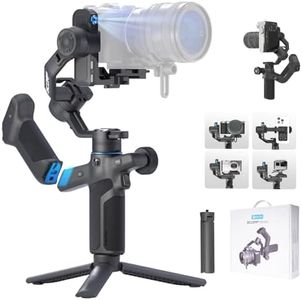
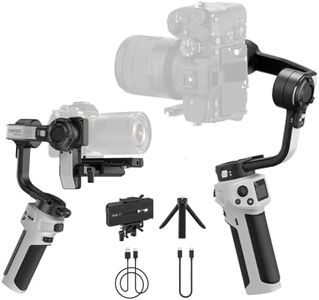
![ZHIYUN Weebill S [Official] Camera Stabilizer, 3 Axis Gimbal for DSLR and Mirrorless Camera, Lightweight Design, Dynamic Stability, Available for Canon/Sony/Panasonic/Nikon/Fujifilm](https://images-proxy.bestreviews.guide/W4-RbG51KEpaj1bA8sKboCkanm0=/0x300/https://m.media-amazon.com/images/I/41dofxRBqiL._AC_CX679_.jpg)
